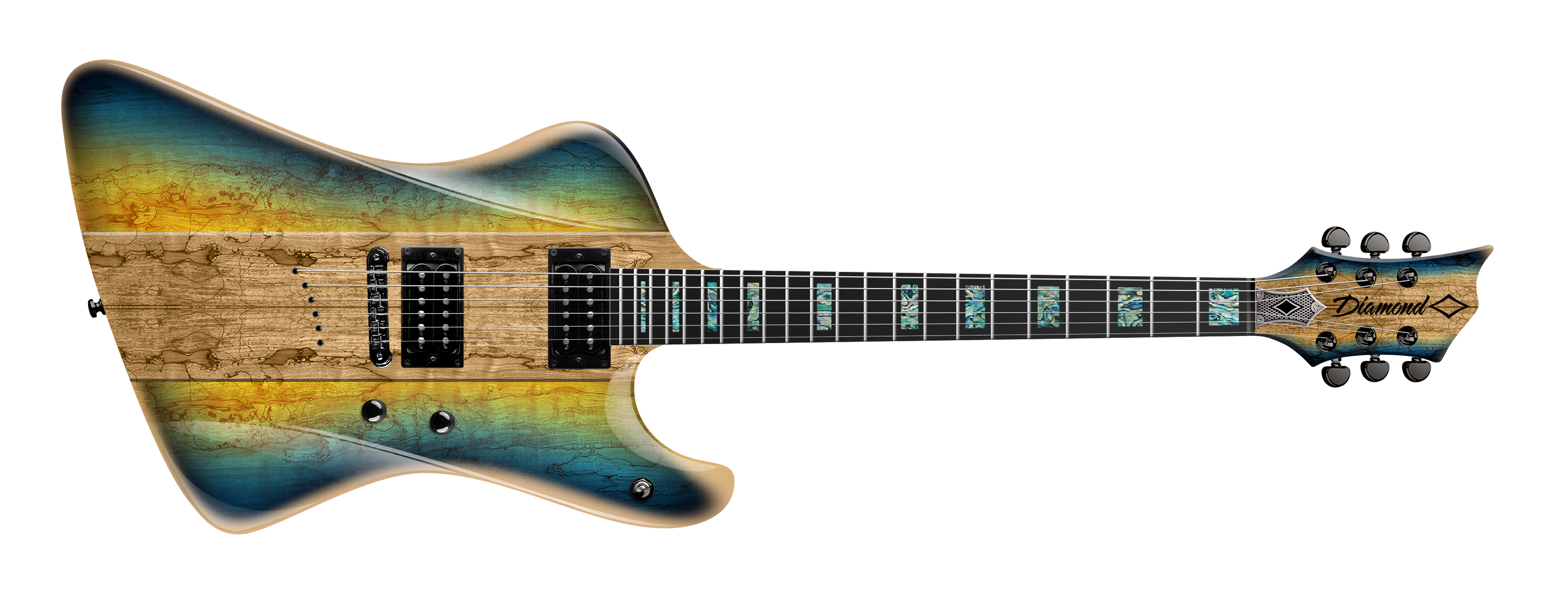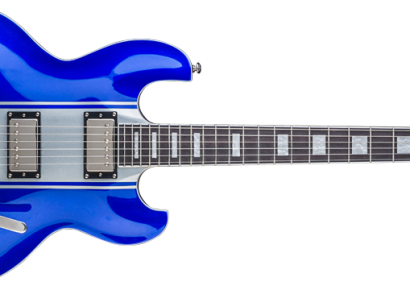HUMBUCK THE SYSTEM
The HailFire SM has some vague similarities to a Gibson Firebird, but only in subtle passing ways. This is very much its own guitar, from the curvier cutaways to the sweeping bevels to the pointy 6-a-side headstock. The body is made of mahogany with a spalted maple top. The raised centre section gives the impression of a neck-thru, although it’s a set-neck guitar. The neck is mahogany too, with a rosewood fingerboard, 22 frets and block inlay markers. The pickups are a pair of Seymour Duncan humbuckers: a JB model in the bridge position and a Whole Lotta Humbucker in the neck. The JB is a hot Alnico V humbucker with high output and strong harmonics, while the Whole Lotta Humbucker was developed for a famous British guitarist in the early 70s who is well known for his Les Paul tones. The controls are a 3-way pickup selector, a master volume, and a master tone with a pushpull coil split which works across both pickups simultaneously.
TRY TO SET THE NIGHT ON FIRE
The Hail_ re has the signature ‘chirp’ often associated with mahogany-body guitars, and the JB and WLH both do a great job of translating the guitar’s natural tone while also imparting a little of their own vibe. The JB has a hint of natural compression which helps to give it a really bold clean tone and a rich, singing distorted lead voice. The overdriven chord tones are exactly what the term ‘chunky’ was invented to describe. The neck pickup has a satisfying roundness to it with plenty of pick attack and sustain, and although both pickups sound quite nice when split into single coil mode, the Whole Lotta Humbucker in particular seems to really sing in this mode. It’s more ‘Tele’ than ‘Strat,’ and the middle position in single coil mode will satisfy all your jangly chordal needs.
OH HAIL YES
This is a pretty unique guitar: elements of vintage and modern work in perfect harmony, both in sonics and in visuals. The playability definitely feels more modern, and you’ll find fingers effortlessly dancing across the fretboard. The only downside is the master coil split. It would be great to have individual control over each pickup’s mode. But that’s an easy enough mod to do yourself if you’re confident with a soldering iron and have a couple of bucks for an extra push-pull pot.

